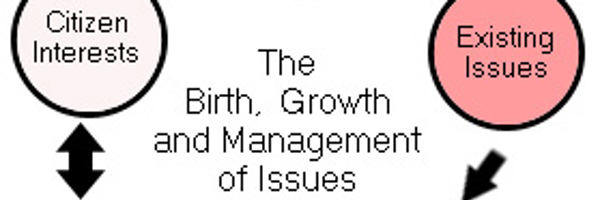
The surprise and disruption are averted by creating a predictable, natural process of communication and action. As one expects, an unaddressed issue becomes increasingly likely to polarize public opinion and cause project delays. Issue Management is a process of identifying issues in a community and organization and responding to them in a way that addresses the health and integrity of both the community and the proponent of change. The CSEPP approach to issue management centers around entering the routines of a community early and often to learn about issues while they are still emerging and can therefore be addressed in a manner acceptable to all parties concerned./p>
Issue Resolution Affects Project Outcome
Every project produces change that generates citizen issues which affect project outcome. Issues are subjects of widespread public interest and discussion that an individual, network or group has decided to act upon to protect and maintain control of their environment. We have learned over the years that citizen issues have stages of development – emerging, existing, and disruptive. As issues progress through the various stages, their effects on individuals, communities, and organizations intensify. The chart below describes each stage of issue development
The Three Stages of Issue Intensities
Emerging Issues
These issues are in a curiosity phase. They are born when people become uncertain about the effect of proposed changes on their ability to protect and control their environment. Folks talk about emerging issues with language that signals concern but also reveals that opinions are still in formation and inflexible positions have not yet been taken.
Existing Issues
If managers or project coordinators do not “hear” the emerging issue, or if the decision is made to procrastinate, delay or ignore the response, an emerging issue will escalate into an Existing Issue. Existing Issues are a demand phase and are still resolvable through facilitation. Existing issues require resolution, but dialog is still possible around potential solutions.
Disruptive Issues
Disruptive Issues generate such ill will that local methods to solve them are not effective. They are handled by another level of society, usually the courts or legislatures. Once an issue has reached the disruptive stage, the potential for meaningful dialog has likely collapsed and negative impact on projects and outcomes is likely. The CSEPP approach to issue management centers around addressing issues before they reach the disruptive stage.
Separating Themes from Issues
Issue Management distinguishes between themes and issues. Issues are actionable and grounded in resolutions. Themes are wide-spread perceptions or attitudes that are too general or abstract to act upon. An example of a theme: “I am against growth.” With further investigation, the real issue underlying the theme is uncovered: “I am against growth because the parks are over-crowded and my kids have no place to play.”
If the public discourse gets captured by themes, sound bites begin to dominate and the value of action gets lost – the project will spin its wheels without traction or forward movement. Controversy is a by-product of themes and low morale and depleted energy is a by-product of controversy. CSEPP supports positive change in a controversial setting by focusing an organization’s efforts on emerging issues first. As this resolution process unfolds, the dangerous thematic language disappears and projects can proceed with greater community support and less risk of disruption.
Resolve emerging issues to avoid further Disruption
Issues identified in the emerging stage, discovered through the informal system of communication, can be resolved at the local level with the least amount of time and resources. Unresolved emerging issues become existing issues. Because these issues were not identified and resolved at the emerging, local level, they are often appropriated by formal bodies, such as environmental or industry groups, which use them to bolster support for a political, economic or ideological agenda. Disruptive issues are beyond the control of local systems to resolve and are aggregated to higher levels of authority, such as legislatures or the courts.

